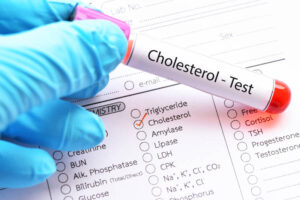An allergy occurs when the body’s immune system (defense system) overreacts to exposure to a particular substance, considering it an intruder and sending chemicals into the body to destroy it.
In the case of a food allergy, the body overreacts to certain proteins in food and releases chemicals called histamines, which cause inflammation. It is interesting to note that only protein, not fat or carbohydrates, can trigger this internal war, with unintended consequences and often away from the conflict.
Although they are often confused with food intolerances, food allergies are different, with food intolerances being less severe.
Food allergy symptoms are more common in infants and children but can occur at any age – you may even develop a food allergy that you have been eating for years without any problems. Food allergies affect between 6 and 8% of children under the age of three and almost 5% of adults, and the number of cases is constantly increasing.
These allergies never occur in a food that is newly introduced into our diet! The immune system needs at least two sensitizing contacts so that only from a third or any future contact it can decide that protein is an enemy and make antibodies or cells with memory against it.
Immediate allergic reactions. Food allergies can occur a few minutes after ingesting food. It is an immediate allergic reaction and is mediated by immunoglobulin E (IgE) antibodies and is the type of reaction that can have the potential for severity up to anaphylactic shock. These types of allergies can be investigated by skin testing or by determining specific blood class E antibodies to immunoglobulins.
Late allergic reactions. Late allergies can also occur more than 6 hours after eating. They are mediated by other types of immune reactions involving memory cells, which will recognize and trigger the signal of allergic inflammation in the tissues. Usually, these cells are highlighted and recognized by biopsy of the lining of the digestive tract.
The symptoms have various forms: oral, gastrointestinal, cutaneous, cardiovascular, systemic manifestations.
- Oral manifestations consist of the sensation of paresthesia (numbness, tingling), itching, swelling of the lips and tongue after eating raw foods (fruits, vegetables).
- The gastrointestinal manifestations are represented by the sensation of bloating, abdominal cramps, nausea, vomiting, diarrhea. They appear relatively early: 30 minutes to 2 hours after ingestion of the allergenic food. The occurrence of semi-late and late onset is not excluded: from 4-6 hours to 2-4 days, which makes the diagnosis difficult to establish.
- The skin manifestations produced by allergens are: urticaria, pruritus, rash, exacerbation of atopic dermatitis. Also described are forms of contact dermatitis in vegetables produced during the handling and peeling of vegetables (celery, potato, horseradish).
- The respiratory manifestations are varied: from the nasal ones (rhinorrhea and sneezing) to severe glottic edema, or wheezing.
- Cardiovascular manifestations are hypotension, palpitations, and tachyarrhythmias.
Anaphylaxis is a potentially fatal reaction that includes difficulty breathing and inducing shock throughout the body; reactions can affect different parts of the body at the same time (for example, stomach pain accompanied by a rash). Anaphylactic shock can cause the following signs and symptoms: weakness, dizziness, headache, ringing in the ears, or visual disturbances caused by hypotension, which can progress to vascular collapse.

RISK FACTORS
- Family history. You have an increased risk of food allergy if you have asthma, eczema or allergies such as hay fever that are common in your family.
- Other allergies. If you are already allergic to one food, you increase your risk of becoming allergic to another. Similarly, if you have other types of allergic reactions, such as hay fever or eczema, you increase your risk of getting a food allergy.
- Age. Food allergies are more common in children, especially infants and young children. As you are aging, your digestive system matures, and your body is less likely to absorb foods or food compounds that trigger allergies. Fortunately, children develop allergies to milk, soy, wheat and eggs. Severe allergies and allergies to nuts and seafood can last a lifetime.
- Asthma. Asthma and a food allergy often occur together. When this happens, it is likely that both the food allergy and the asthma symptoms are severe.
So here are 12 of the most common food allergies:
1. Egg allergy
Egg allergies are very common in children, being in the second place at the top of food allergies at a young age, after the allergy to cow’s milk and derivatives. About 2% of children suffer from this type of food allergy, but fortunately, about 70% of them will be cured by puberty of this allergy.
There is a possibility of transferring protein from the egg through breast milk and thus, this type of allergy may occur even in newborns exclusively breastfed. In the latter case, the recommendation is for the mother to avoid ingesting any product that may contain eggs.
Manifestation of an egg allergy :
- Cutaneous – with itching, the appearance of lesions of the eczema / atopic dermatitis type or of the urticarian type with the papules or placards of urticaria or of a rosette also called erythema;
- Respiratory – rhinitis / rhinosinusitis may occur with sneezing, profuse watery discharge from the nose, stuffy nose, heaviness in breathing, coughing and even asthma attacks, with heavy breathing and wheezing;
- Digestive – abdominal pain / cramps, nausea, vomiting and diarrhea may occur.
2. Cow’s milk allergy
A cow’s milk allergy is one of the most common allergies at an early age, affecting between 2-7.5% of children up to 5 years of age. It occurs a few minutes after the ingestion of milk or dairy products and only in rare cases, within 2-3 days after food administration, a situation in which the cause-effect relationship is not so obvious, requiring further investigation.
Cow’s milk contains fat, lactose and protein. Proteins are responsible for the appearance of allergic phenomena, through a hypersensitivity mechanism in which the immune system considers milk proteins as “enemies” and manufactures antibodies or cells with memory against them, triggering an immune “war” and inflammation of the mucosa.
The proteins responsible for the allergy are: casein alpha and beta lactoglobulin.
3. Peanuts allergy
Peanut allergy symptoms can be life threatening (anaphylaxis). For some people who are allergic to peanuts, even tiny amounts of hazelnuts can cause a serious reaction. Peanut allergies have increased in children. It is important to talk to your doctor even if you have had only a mild allergic reaction to peanuts because there is a risk of a more serious future reaction.
A peanut allergy occurs when the immune system mistakenly treats peanut proteins as harmful. Direct or indirect contact with hazelnuts causes the immune system to release toxins into the bloodstream, causing symptoms.
4. Hazelnuts allergy
Hazelnuts allergies are common in Australia and less common in Europe due to differences in eating habits. The clinical picture is similar to that found in peanut allergy, although the two, peanuts and hazelnuts, are not related, peanuts being vegetables that grow on the ground and peanuts being fruits that grow in trees.
In severe forms with a history of anaphylaxis, self-injecting adrenaline is highly recommended. It is not recommended to introduce hazelnuts in the diet until after the age of one year, both in children with a family history of atopy and even more so in those who have very mild forms of atopic dermatitis after eating peanuts and hazelnuts.
For the latter, it is recommended that the introduction of these foods be done under the careful guidance of a pediatrician or allergist.
5. Seafood allergy
Seafood is a group of small marine animals that can be introduced into the diet in various forms. Most people who are allergic to seafood are allergic to shellfish, and reactions to these foods tend to be more severe.
Thus, doctors may recommend that people allergic to any type of seafood completely eliminate both types from their diet, as there may be contamination or new allergies. The symptoms of seafood allergies are different from person to person and can occur within minutes of ingesting food or even within hours.
6. Fish allergy
Cod, salmon, tuna, eel, and other fish can trigger allergies. These types of allergies are similar to those caused by mollusks, but in this case, there are higher chances that they appear in adulthood, being more difficult to overcome.
Although it is quite severe, a fish allergy is easier to avoid than other types of allergies. The major allergen responsible for triggering allergies is a protein called parvalbumin, which controls the amount of calcium in white meat.
Because parvalbunins are very similar to different species of fish, allergy can occur regardless of the type of fish species. When a sensitive person comes in contact or consumes fish, the allergic reaction and its specific symptoms occur.
7. Wheat allergy
A wheat allergy is an allergic reaction to those foods that contain wheat (a term that designates several species belonging to the genus Triticum). Experts say that allergic reactions can be caused by eating wheat, and in some cases, it can be triggered by inhaling wheat flour.
If you have noticed any symptoms after eating cereal, bread or pasta, if you develop hives or a rash or if you have a stomach ache or if your nose is stuffy or you have a runny nose, you may have a wheat allergy.
RELATED: 9 Shocking Reasons Why Your Stomach Hurts All the Time
8. Soy allergy
Soy is a type of food well known for its capability to cause allergies. In many cases, a soy allergy begins in the early years of life with an allergy to milk formulas that include soy. Although most children are overcoming soy allergies, their manifestations can persist into adulthood.
Most of the time, the signs and symptoms of a soy allergy are mild: hives or itching around the mouth. In rare cases, a soy allergy can even cause serious allergic reactions, which can be life-threatening (anaphylaxis).
9. Corn allergy
A corn allergy is not as common as some other allergic reactions to other types of food, but when it does occur, it can be severe. Symptoms can range from itching, redness and nasal congestion to wheezing, swelling of the throat and even shock (anaphylaxis).
10. Sesame allergy
Sesame allergies may not get as much attention as peanut allergies, but the reactions can be just as serious. Allergic reactions to sesame seeds or sesame oil can be responsible for anaphylaxis. The increase in the number of sesame allergies in recent years may be due to the growing number of products containing sesame seeds and sesame oil.
Sesame oil is considered a healthy cooking oil and is used in a variety of foods, including certain vegetarian dishes, salad dressings, and many dishes from the Middle East and Asia.
11. Celery allergy
Celery is a real storehouse of vitamins, amino acids, minerals, trace elements and beneficial substances that are contained in the leaves, stems and roots of the plant. Due to its pronounced spicy taste, it is able to provide a special piquancy for any dish, so it is often used in cooking.
Despite its undeniable benefits for the body, celery belongs to the category of foods with a high degree of allergens. It can cause increased sensitivity in the body, not only as a food product, but it can also cause contact allergies or even increased sensitivity to plant pollen.
12. Allergy to additives and preservatives
Food additives and preservatives are substances that have the role of giving color, taste and preserving food. Some of them are dyes (tartrazine, carmine, saffron), antioxidants, emulsifiers and stabilizers (gums and lecithin), flavorings (monosodium glutamate, spices and sweeteners), preservatives (benzoate, nitrates and sulfites).
It is not known exactly how these substances cause allergic reactions, and the exact number of people affected is also not known exactly, but it is estimated that over 1% of adults and over 2% of children are affected.
The most common symptoms are hives, angioedema (swelling or edema of a part of the body, often the face, lips, limbs), atopic dermatitis, pruritus and less often, abdominal discomfort, nausea, vomiting, allergic rhinitis or respiratory symptoms.
Wanna know if you’re allergic to some types of foods? Here’s a food intolerance test!






